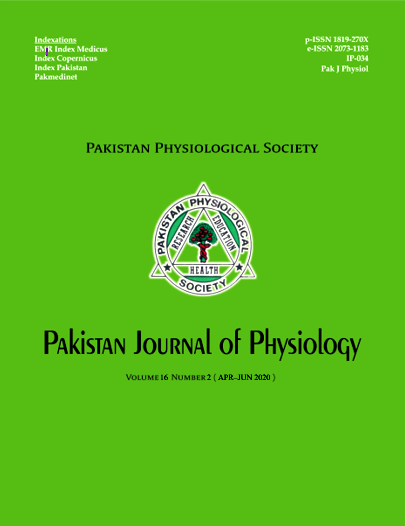Hematological and immunological parameters among diacetylmorphine addicts
DOI:
https://doi.org/10.69656/pjp.v16i2.1261Keywords:
Diacetylmorphine, Addiction, Haemoglobin, WBC, HaematologicalAbstract
Background: Chronic usage of diacetylmorphine has significant impact on different physiological processes of the body. Hematological parameters are reported to alter in diacetylmorphine addiction leading mainly to various signs and symptoms of anemia and infection. Therefore, we designed this study to investigate for hemtological and immunological parameters in diacetylmorphine (heroin) addicts. Methodology: This was a case control study. In this study we recruited forty one male heroin addicts ( 25 to 46 years) along with forty one male healthy subjects (n=82) as controls. The subjects were assessed clnically through history and physical examination. Complete blood count (CBC) was done by Celldyne Ruby, multi parameter automated hematology analyzer. Representation of data was done by mean ± standard deviation. Independent sample T test was used to compare differences between the two groups via Statistical Package for the Social Sciences (SPSS) version 22 and p < 0.05 was considered significant. Results: The results of our study showed decreased hemoglobin levels, hematocrit, mean corpuscular volume, mean corpuscular hemoglobin concentration (p <0.01) and marginal increase in WBC count in diacetylmorphine addicts. Rest of the hematological parameters were normal. Conclusion: Diacetylmorphine addiction showed significant changes in hematological parameters as compared to control group.
Downloads
Downloads
Published
How to Cite
Issue
Section
License
The author(s) retain the copyrights and allow their publication in Pakistan Journal of Physiology, Pak J Physiol, PJP to be FREE for research and academic purposes. It can be downloaded and stored, printed, presented, projected, cited and quoted with full reference of, and acknowledgement to the author(s) and the PJP. The contents are published with an international CC-BY-ND-4.0 License.











